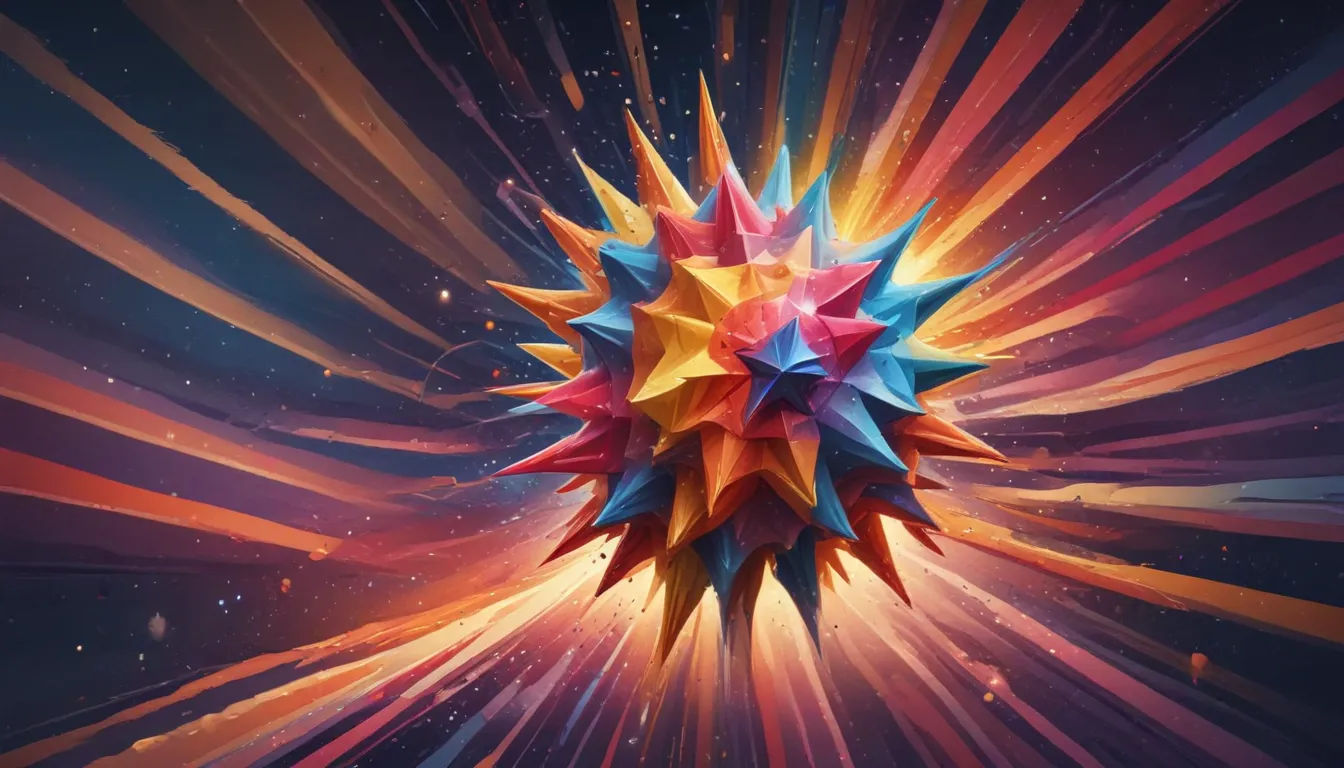The pictures we use in our articles might not show exactly what the words say. We choose these pictures to make you interested in reading more. The pictures work together with the words but don’t take their place. The words still tell you the important facts.
In the vast expanse of the universe, few phenomena captivate our imagination quite like starburst regions. These cosmic wonders are filled with awe-inspiring beauty and mind-blowing facts that continue to enthrall scientists and astronomy enthusiasts alike. Join us as we unveil 13 fascinating facts about starburst regions, shedding light on the mysteries and wonders that make them so captivating. From their formation and influence on galaxy evolution to their role in the creation of planetary systems and gamma-ray bursts, get ready to embark on a journey through the intriguing and mesmerizing world of starburst regions.
Unveiling the Cosmic Marvels
- Starburst regions are like bustling cities where stars are born at a super-fast rate. They emit intense radiation, create black holes, and even influence the formation of planetary systems. They’re like the energetic heartbeats of galaxies!
- Starburst regions are cosmic storytellers, revealing the secrets of galaxy evolution. They can be found in different types of galaxies, trigger the formation of globular clusters, and produce gamma-ray bursts. Studying them helps us understand the grand tale of how galaxies evolve.
Starburst Regions: Intense Hubs of Star Formation
Starburst regions are areas within galaxies where stars are forming at an incredibly accelerated rate. Characterized by a high density of gas and dust, these regions provide the perfect conditions for new stars to be born. The intense gravitational forces within starburst regions can cause the collapse of gas and dust, leading to the formation of massive stars.
Starburst Regions in Galaxies Undergoing Mergers
Galaxies undergoing mergers can trigger the formation of starburst regions through gravitational interactions. The compression of gas and dust due to these interactions leads to increased star formation activity. This phenomenon is a key driver of galaxy evolution, shaping the structure and dynamics of galaxies.
The Radiant Spectrum of Starburst Regions
Starburst regions emit intense radiation across the electromagnetic spectrum, from radio waves to X-rays. The presence of young, massive stars within these regions results in copious amounts of radiation, offering insights into the physical processes occurring within starburst regions.
Birthplaces of Supermassive Black Holes
Intense star formation activity in starburst regions can give rise to supermassive black holes at the centers of galaxies. As massive stars in the region age and undergo supernova explosions, the conditions may be ripe for the formation of black holes through the collapse of massive stars.
Galactic Winds from Starburst Regions
The rapid formation and evolution of stars within starburst regions generate powerful stellar winds that blow outwards, carrying gas and dust into the interstellar medium. These galactic winds play a crucial role in redistributing matter and regulating the growth of galaxies.
Starburst Regions: From Young to Old Galaxies
While commonly associated with young, actively star-forming galaxies, starburst regions can also occur in older galaxies. Different triggers, such as interactions with neighboring galaxies or accretion of gas, can rejuvenate older galaxies, revitalizing them and shaping their future evolution.
Diverse Galactic Residents
Starburst regions can be found in various types of galaxies, including spiral, elliptical, and irregular galaxies. This indicates that conditions for star formation exist in diverse galactic environments, influencing the presence of starburst regions across different galaxy types.
Bright Emission Nebulae in Starburst Regions
Massive stars within starburst regions emit intense ultraviolet radiation that ionizes surrounding gas, creating bright emission nebulae like H II regions. These colorful structures serve as markers of ongoing star formation within starburst regions.
Home to Globular Clusters
The dense material in starburst regions facilitates the formation of globular clusters, spherical clusters of stars that orbit galaxies. The high concentration of material provides an ideal environment for the formation and longevity of these clusters over cosmic timescales.
Stellar Diversity in Starburst Regions
Starburst regions can host a diverse range of stellar populations, from massive, short-lived stars to smaller, longer-living stars. This diversity contributes to the complexity of physical processes within starburst regions and enriches the surrounding interstellar medium.
Influence on Planetary Systems
The intense radiation and stellar winds in starburst regions can impact the formation and evolution of planetary systems. Alterations to protoplanetary disks and disruptions to planetary embryos can influence the composition and orbital arrangements of planets within these regions.
Producers of Gamma-Ray Bursts
Some gamma-ray bursts, among the most energetic events in the universe, are associated with starburst regions. Energetic processes like supernovae trigger these bursts, providing valuable insights into the formation of stellar remnants and the dynamic nature of starburst regions.
Essential Players in Galactic Evolution
Studying starburst regions is essential for unraveling the complexities of galaxy evolution. Insights gained from these regions contribute to our understanding of processes such as stellar feedback, gas dynamics, and black hole formation, shaping our broader understanding of galactic evolution.
Final Thoughts
In conclusion, starburst regions are captivating phenomena in the universe, characterized by intense star formation and profound impacts on galactic evolution. These cosmic wonders continue to inspire awe and fascination, showcasing the beauty and complexity of our cosmos. As we delve deeper into the mysteries of starburst regions, we gain a deeper understanding of the fundamental processes that shape our universe and illuminate the wonders of the cosmos.
FAQs: Exploring Starburst Regions
Q: What are starburst regions?
A: Starburst regions are areas within galaxies where stars form at an accelerated rate, creating a burst of stellar activity.
Q: How do starburst regions form?
A: Starburst regions are typically triggered by gravitational interactions between galaxies or the inflow of gas and dust into the central regions of a galaxy, leading to increased star formation.
Q: Can starburst regions trigger supernovae?
A: Yes, starburst regions can trigger supernovae due to the high rate of star formation, increasing the chances of massive stars undergoing explosive supernova events.
Q: What is the significance of starburst regions in galactic evolution?
A: Starburst regions play a crucial role in galaxy evolution, shaping the structure and dynamics of galaxies through intense star formation activity.
Q: Are starburst regions visible to the naked eye?
A: Most starburst regions are located in distant galaxies and not visible to the naked eye. However, some nearby galaxies with active starburst regions can be observed with telescopes, revealing their stunning beauty.
Exploring the Vast Universe
Starburst regions are just the beginning of a vast universe filled with wonders waiting to be discovered. Delve into the captivating world of cosmic phenomena, where each discovery unveils a new layer of mystery and beauty. Join us on a journey through the stars and beyond, as we unravel the secrets of the cosmos and deepen our understanding of the universe we call home. Embrace the awe and wonder of the universe, and let the marvels of starburst regions inspire you to explore further into the depths of space.
Was this page helpful?
Our commitment to delivering trustworthy and engaging content ensures that each fact shared with you is a valuable addition to your knowledge. As we continue to explore the wonders of the universe together, trust in our dedication to providing accurate and captivating insights into the mysteries of the cosmos. Thank you for joining us on this journey of discovery and fascination, as we uncover the endless marvels of the universe.






